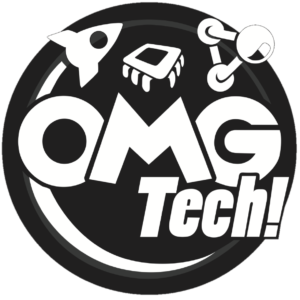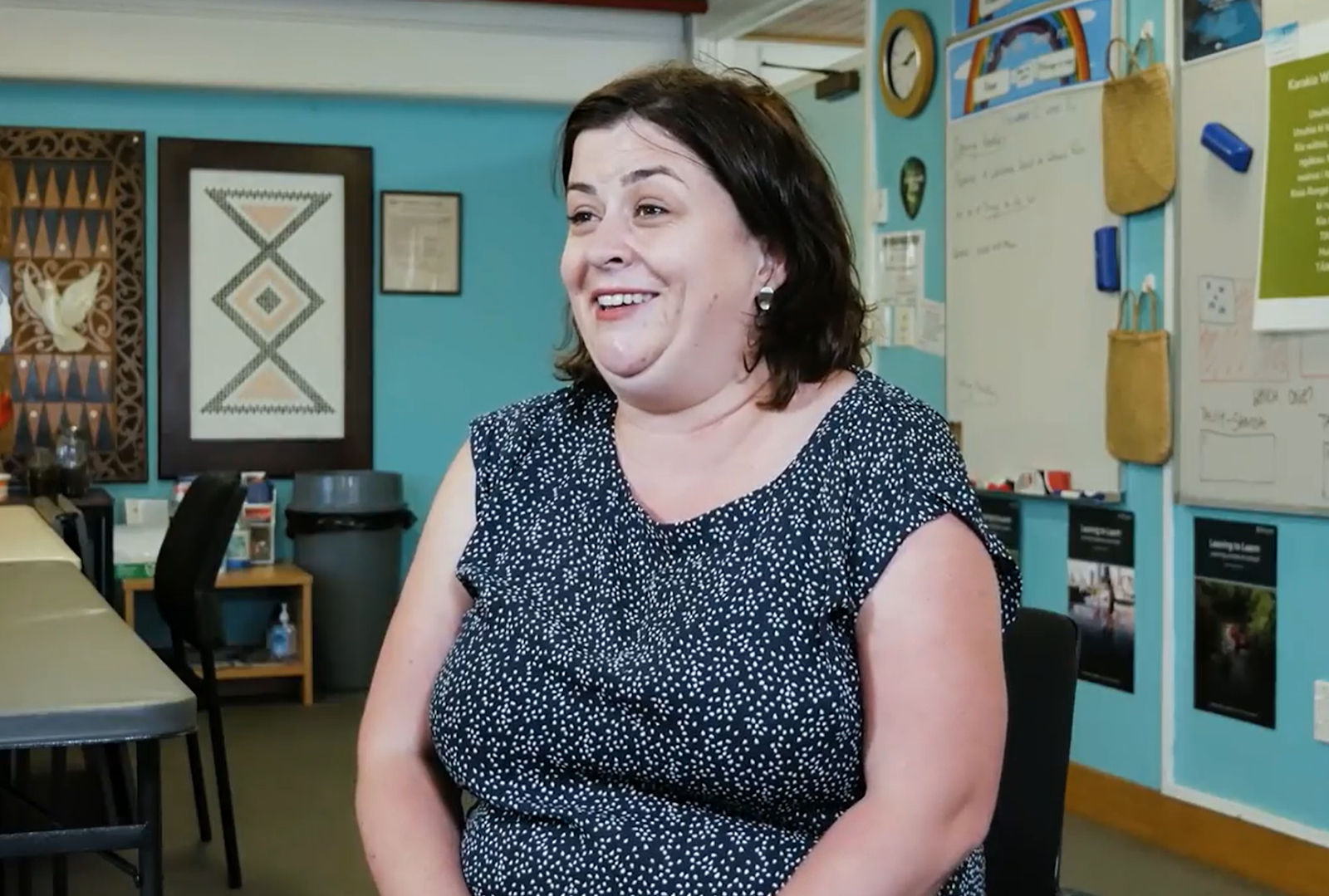Hybrid learning boosts well-being for ākonga, kaimahi and communities
Author: Maggie Cassidy
Maggie Cassidy is one of our PLD facilitators and one of the authors on the project.
Innovative schools are delivering high-quality learning both live and remotely, creating programmes that ākonga can access no matter where they are. This approach, called hybrid learning, doesn’t just make learning accessible: it improves well-being for everyone involved.
Team planning at Greenhithe has improved kaimahi wellbeing.
The Pam Fergusson Charitable Trust interviewed schools in Tāmaki Makaurau that deliver hybrid learning programmes.
Wesley Primary School|Te Kura Tuatahi o Wēteri, Tāmaki College, and Te Aho O Te Kura Pounamu (more commonly known as Te Kura) all stood out for their focus on wellbeing and community relationships. Since ākonga need connection and support to learn offsite, this is key to their hybrid programmes' success.
Wēteri kaiako Sam Bound sums it up: “Just giving them real-life opportunities and problem-solving through the use of technology has been really powerful for our students.”
Catherine Anthony at Huinga Ako, a face-to-face session for Te Kura ākonga to connect with each other and staff.
Hearing ākonga voice in new ways
““My personal focus is on trying to grow them as young people in society, become critical thinkers, become responsible…and so we talk about things like gender, racism, all things under the sun. Because if we’re not having a talanoa, a kōrero… where else are they going to find it?””
Wellbeing check-ins and personal reflections built into the Te Kura website let all ākonga be heard by their kaiako. For those who are socially anxious or just more comfortable posting a comment than talking face-to face, this is a game-changer.
18-year-old Sophie was surprised to see “a lot of sections in it about your wellbeing” because “I never really got that sort of experience at school where people actually like, wanted to know how we were… it feels really personal and it’s really nice to have people to share that sort of thing with, who you can trust. So I really enjoy using that.”
Her classmate Dylan seconds this. “Mainly when you’re in a face to face school, they don’t really address you, they address everyone.”
He says that at his previous school, issues like bullying generally went unresolved. “When something like abuse happened, it didn’t get fixed, or mental health problems… but here it’s one-on-one, every time. They know what’s happening. They know what’s going on and they help to the best of their ability, which is really nice.”
Dylansays Te Kura’s termly Wellbeing Survey pushes him to self-reflect. “I’m not very good with emotions…filling it out was, I wouldn’t say emotional, but a little eye-opening to who I really was.”
Te Kura’s most vulnerable ākonga work with kaiāwhina, non-teaching staff whose focus is pastoral support. “But it’s so much more than that,” says Kaiāwhina Leilani Kake. “Sometimes the student will tell the kaiāwhina something that they wouldn’t tell the teacher. So we are the advocates for the students, as well as the conduit between the kaiako and the students, as well as the whānau too.” Her colleague Rita Beckmannflay describes the purpose of the role as “to be present, to be encouraging, to be consistent, to follow through… just to let them know I’m here.”
“My personal focus,” says Leilani, “ is on trying to grow them as young people in society, become critical thinkers, become responsible…and so we talk about things like gender, racism, all things under the sun. Because if we’re not having a talanoa, a kōrero… where else are they going to find it?”
Rita explains how this impacts so much more than ākonga engagement and performance. “Their wellbeing affects everything: their wairua, and their tinana, and whānau. Most of all it affects their connection to their turangawaewae. So for me the follow-through is quite important, and also that I bring that air of being looked after to the students. ”
Kaiāwhina Leilani Kake and Rita Beckmannflay. Leilani describes kaiāwhina as “guides on the sides” for ākonga as they learn.
Catherine Anthony, who has been managing kaiāwhina since the role was introduced in 2020, says “we deliberately hired kaiāwhina who had experience at working in a culturally responsive way, empathy, good people skills and ability to build relationships and meet students and families where they were at.”
“Kaiāwhina improve engagement because they are so good at forming relationships, and so sensitive to the complex family backgrounds and challenges facing many of our families.”
Shared planning gives teachers time back
Hybrid schools typically store learning materials on central online platforms such as Google Classroom, where teachers contribute resources to a shared pool.
This makes it easy for ākonga to find their task choices and in-progress mahi. Greenhithe kaiako Charlotte Pollard-Brown says “it takes a lot of the pressure off of me to instantly mark so kids can move on to the next thing.”
“Planning collaboratively has been massive for my wellbeing. It means I don’t have to spend hours and hours and hours planning each curriculum area. We take one each and plan that for two weeks - we plan the in-class learning, the workshop learning, and the learning slides (student-choice activities stored in Google slides). That means we can do it really, really well. We’re not, you know, doing a half-attempt at each area, we’re doing one area really comprehensively, ensuring that learning is differentiated, and the kids have access to everything they might need.”
Andy Crowe, assistant principal at Wēteri, says collaborative planning has “changed how the clock works. Staff come in later and leave earlier, we have more time with our own families.”
Andy Crowe says that at Wēteri, wellbeing isn’t just spoken about - “You can actually see it. You have to come see it to believe what I’m saying.”
Tāmaki College Deputy Principal Russel Dunn describes how new kaiako who start mid-year can take over seamlessly since all course content, planning, and in-progress ākonga mahi is online. Before the school’s resources were cloud-based, “if a teacher left, you lost all the content and knowledge that they had developed. Now when the new teacher rocks up, they just pick up from where you left off.”
At Wēteri, onsite teaching is shared too. Sam Bound describes her teaching environment: “We have a workshop wall where we have a collaborative environment with four teachers, currently, and a hundred students. We have the focusses up on the workshop wall and the teachers that will be leading them, and the students put their photo up to choose which workshop they’d like to be in, based on what they think they need to continue to work on and grow with.
“It’s been really empowering for them, really mana-enhancing, to have that choice over their learning and which teacher they’re with. At first it started with teachers having to place them and then it moved into students having the ownership.”
The students feel encouraged and challenged by this. One year five said, “I love learning at Wesley because I get cool opportunities to do challenges or go outside of school on trips. I get excited when I get offered opportunities.”
Ākonga at Wēteri get excited about “cool opportunities to do challenges or go outside of school on trips.”
Bringing the Whole Community to School
Sam Bound describes learner choice as “empowering for them, really mana-enhancing.”
Wēteri and Tāmaki College act as community hubs, providing on-site and outreach services that “Anyone in the community can access,” as Deputy Principal Andy Crowe explains. Hybrid learning enables this as streamlined planning gives kaiako more time for pastoral support and community initiatives.
Wēteri’s on-site services include the Kai Hub food bank and the Mana Clinic, a free multi-lingual clinic for local whānau.
Through a partnership with the Pacific Foundation, Wēteri hosts Home Interaction for Parents and Youngsters (HIPPY), providing home-based tutoring for tamariki aged 3-5 and supporting whānau with the transition into school.
“Our DP Shelley Saunders runs a Talanoa group,” adds Andy. “She’s involved parents form Tongan, Samoan and Māori whānau to give input.”
“Whānau should be participants,” he continues, “ Not just observers, so we try to include and involve them as much as we can.”
Andy says wellbeing “is not just talked about by the board, or Lou (our principal). You can actually see it. You have to come see it to believe what I’m saying.”
Tāmaki College supports off-site learning by providing refurbished devices and free internet for the neighbourhood around the school. Russel says it’s crucial “to provide training and support for families so that they can better engage with the young people and their learning, which is mostly cloud-based.”
“So to train the parents, to make sure that they are cybersmart, they come into the school and we have young people who work alongside them.” Ākonga are empowered to teach adults about email, device security and more.
“So we have this idea of ako between the young people and the adults in their community,” says Russel. “All these training sessions take place in our Cafe Connect, which is run by a former student onsite. She does the coffees and muffins while the families come in and learn. That’s through the partnership we have with the Digital Inclusion Alliance Aotearoa and the 20/20 Trust. It's good to see the young people working alongside their families.”
Russel describes how the school provided refurbished devices that run a Chrome browser (“like a chromebook effectively, but the desktop version of it”) for families “so they can access email, social media, and cloud storage.”
“Phase one is to get families digitally included. Now we’re in phase two, where we show the parents what’s possible with this knowledge. They can come in to learn and to complete their own projects with the tech we have onsite, like laser cutters. Schools are underutilised from 3:00 in the afternoon, so when we’re not using the space, we want to be able to open it up to the community.”
“Parents who learn these digital skills can talk to their kids about emerging jobs outside of the traditional be a lawyer, be a doctor framework. This is how we can increase the amount of Māori and Pasifika in the tech sector.”
This article is part of a three-part series detailing findings from case studies on future-focused education practices in Tāmaki Makaurau, conducted by the Pam Fergusson Charitable Trust with support from Te Tāhuhu o te Mātauranga, Aotearoa’s Ministry of Education. Access the full project at https://omgtech.co.nz/future-of-learning







